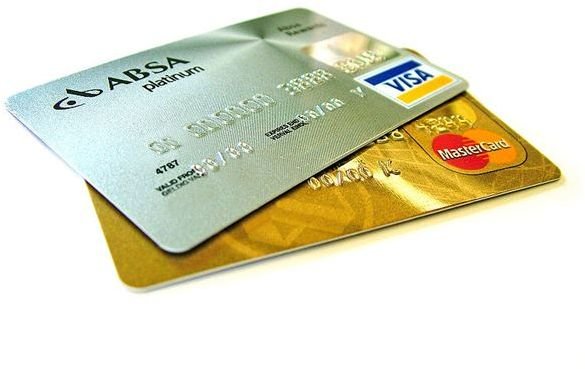Credit Cards: What are Student Cards and Where to Find the Best Deal
What Are Student Credit Cards?
Student credit cards are issued by various financial institutions and are designed to meet the needs of students attempting to build credit while also having a needed credit line while they are away at college or attending a local university.
Typically, student credit cards come with higher interest rates, especially if the student has little or no credit history. Some student cards require a parent or other responsible co-signer, if the student has no credit or prior bad credit.
Part of understanding student cards, means exploring the question what are student cards and how will they be utilized. Most financial institutions offer student credit cards with low credit limits. For example, a student may only be able to obtain a $1,000 to $3,000 limit where a person with excellent credit could be offered a much higher credit limit.
Teaching Credit Card Responsibility
It should be part of any parent’s job to consider if the student is responsible enough to obtain a credit card. Keep in mind the purpose of obtaining the card is to help build your child’s credit, not use it for spending sprees, buying that new video game or running up high balances they are unable to pay off.
Before you begin your research into what are student cards, have a serious talk with your child about paying off balances in full each month and the fallout that could occur if they only make minimum payments each month.
Where to Find Student Credit Cards

Companies like Capital One, Discover, VISA, and MasterCard all offer student credit cards. When considering what are student cards and if you should obtain one, do some research on the Internet to see which company offers the most attractive rates and fees. Once such place that offers various credit card comparisons is Credit Card Guide. Most banks and credit unions also offer student credit cards and you can also explore the websites of VISA, Discover or MasterCard directly.
Because a simple Internet search will bring many results for student credit cards, it’s your responsibility to shop around. If the student has no credit history or bad credit, even with a co-signer on the credit card, expect interest rates between 15% and 24%, or higher.
In addition, even if the student card has no annual fee, balance transfer fee, or an introductory zero percent APR, make sure you ask what the interest rate will be once the introductory period is over.
Before you agree to any student credit card, make sure you understand all the fees associated with the card including late fees or additional late fees for paying outside of the credit card billing cycle, and cash advance interest rates versus credit purchase interest rates. Ask about fees for obtaining cash advances at ATM machines or fees and interest rates associated with utilizing credit card check offers.
In order to make a smart decision on a student credit card, write a list of credit purchase scenarios and present each question to the credit card company to ensure you understand all costs and fees associated with the credit card.
Tips On Student Credit Cards

As discussed earlier, many banks and financial institutions offer student credit cards. Before you choose that first one, keep some of these tips in mind:
- On Campus Sign Ups – Tell your child to avoid the temptation of credit card companies who visit their college campuses or bombard their student inboxes with credit card offers. Most, but not all of these visiting credit card reps offer attractive credit limits and extremely high interest rates and fees. On some college campuses, this practice is banned. Ask your child’s college if they sell addresses of students to credit card companies and if they do, ask to have your child’s name deleted from the database.
- Obtain One Card – There is no reason for your child to have more than one credit card. Explain that it is for emergencies only and that by paying the balance in full each month, they won’t incur interest charges or other fees. Tell them that by paying the card in full each month, they are building a good credit and payment history.
- Reward Point Cards – Most reward point credit cards require the student make large purchases to obtain any real usable points. Avoid reward point cards to keep student credit spending in check.
- Debit Cards – Do consider a debit card that can be controlled via the student’s bank account. Debit cards are accepted almost everywhere and for all sorts of purchases.
- Credit Limit Increases – Speak with your child and the credit card company about limit increases. If a student is given a $1,000 limit and after six months, that limit is automatically increased to $3,000, it’s more tempting to charge more.
Final Thoughts on Student Credit Cards
When considering credit cards and what are student cards, think of this scenario offered by Credit FYI in an article written by personal finance writer, Dawn Handschuh. “A student who makes only minimum payments on a modest $1,500 credit card balance with a 21% interest rate won’t have that card paid off for 10 years, and that’s after spending an additional $2,096 in interest.”
The most important tips to keep in mind before you investigate student credit cards is speaking with your child on credit responsibility. Find out if the college offers a free course on financial management and encourage your child to enroll.
Parents are the ultimate examples for a child’s spending habits, so ensure you follow good credit habits of your own in order to pass along that knowledge to your child.
References & Image Credits
References: Credit FYI (May 3, 2010) https://www.creditfyi.com/Creditpedia/Manage-Your-Money/Credit-Card-Management-For-College-Students.htm
Image Credits:
- Credit Cards / Wikimedia Commons
- Forever In Debt Name / Wikimedia Commons
- College Graduate Students / Wikimedia Commons
